To maximize your watch’s visibility during night runs, first optimize your display by cranking up the brightness, enabling raise-to-wake gestures, and setting up multiple data screens for quick access without complex navigation. Second, add external LED slap bands and reflective gear on moving limbs for enhanced visibility up to 500 meters. Third, configure LiveTrack sharing, incident detection, and download offline maps for emergency navigation. These strategies work together to create a thorough safety system that’ll keep you visible and secure throughout your darkest adventures.
Optimize Your Watch’s Built-In Display Features
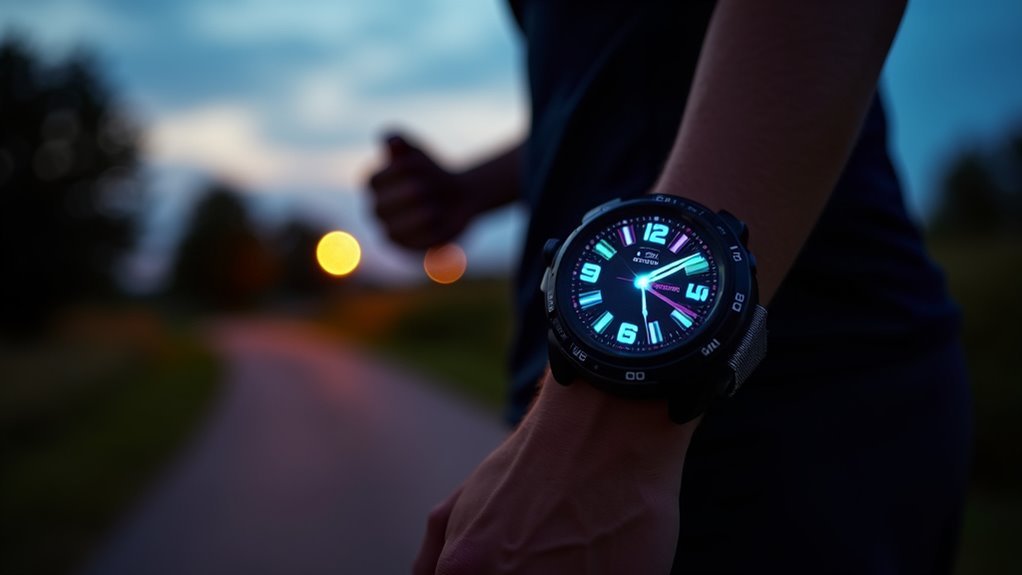
When darkness falls and you’re preparing for your night run, your watch’s built-in display features become critical tools for maintaining visibility and tracking performance.
Start by adjusting your brightness settings manually rather than relying on ambient sensors—increase brightness for better readability while avoiding maximum levels that’ll drain your battery during long runs. Consider setting up multiple data screens to quickly access essential information without navigating through complex menus in low-light conditions.
Enable Night Mode if your watch offers it, providing continuous low-level backlighting without repeated button presses. This feature reduces battery consumption compared to frequent manual activation and typically stays active throughout your workout.
Optimize your screen timeout settings to keep the display on longer, and activate raise-to-wake gestures for hands-free operation in dark conditions.
Add External Lighting and Reflective Accessories
While your watch’s display helps you track performance data, external lighting and reflective accessories transform you into a highly visible presence that drivers and pedestrians can spot from hundreds of meters away.
Essential visibility gear includes:
- LED slap bands – Attach these rechargeable lights to your wrists, ankles, or running pack. They’re visible up to 500 meters and offer multiple modes like solid or flashing to maximize attention.
- Reflective clothing – Wear reflective vests, sashes, or hats that bounce back headlights and streetlights. Choose water-resistant materials that maintain visibility in wet conditions. Remember that strategic placement is key, as you don’t need excessive reflective items to achieve maximum visibility.
- Strategic placement – Layer LED lights with reflective gear on moving limbs and your torso. This dual approach guarantees you’re visible regardless of ambient lighting conditions.
Configure Smart Safety and Navigation Settings
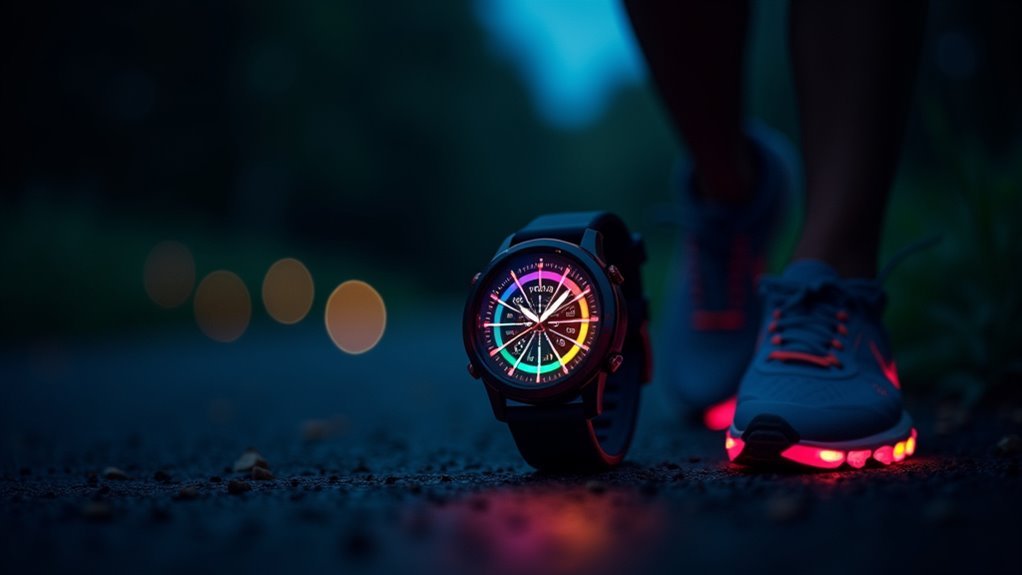
Beyond making yourself visible to others, your watch’s smart safety and navigation features create a digital safety net that keeps you connected and on course during nighttime runs.
Enable LiveTrack through your Garmin Connect mobile app to share real-time location with family or friends who can monitor your progress. Set up incident detection to automatically alert emergency contacts if your watch detects a fall or accident—you can cancel false alarms manually. Configure up to three emergency contacts in your Garmin Connect app to ensure reliable backup support during solo night runs.
Stay connected with loved ones through real-time location sharing and automatic emergency alerts during your nighttime adventures.
Download offline maps before heading out, ensuring navigation works without cell service. Configure turn-by-turn alerts and deviate-course notifications to stay on route when visibility’s poor.
Set pace reminders to maintain steady movement, and utilize ABC sensors for real-time elevation and weather data that enhance night running safety.
Frequently Asked Questions
How Do I Test My Watch Visibility Before My First Night Run?
Test your watch outdoors at dusk, activate its backlight while moving your arms, and check visibility under streetlights. Practice quick glances during a short walk to guarantee you’ll read it easily while running.
What’s the Minimum Lumen Requirement for Wrist-Mounted Safety Lights?
You’ll need at least 50 lumens for basic visibility, but for running activities, you should choose wrist-mounted lights with 200-500 lumens for ideal safety and visibility.
Which Watch Strap Materials Work Best for Reflective Visibility at Night?
You’ll get best reflective visibility with rubber straps containing retroreflective strips or fabric NATO straps with luminous threads. Photoluminescent materials like Super-LumiNova offer excellent glow without needing batteries.
How Often Should I Replace Batteries in My LED Safety Accessories?
You should replace batteries in LED safety accessories every 2-4 years for ideal performance. Test them monthly and watch for dimming lights or longer charging times, which signal it’s time for replacement.
What Weather Conditions Affect Watch Display Visibility the Most During Night Runs?
Rain affects your watch display most during night runs. Water droplets distort backlighting, moisture fogs screens, and humidity reduces touch sensitivity. Cold temperatures also slow refresh rates and dim displays considerably.
In Summary
You’ve got the tools to make your night runs safer and more visible. Don’t skimp on your watch’s brightness settings, and always add reflective gear or lights to boost your visibility. Configure your smart features before heading out—they’ll keep you on track and connected to help if needed. With these three tips implemented, you’ll run confidently in the dark while staying visible to others and maintaining full control of your workout data.

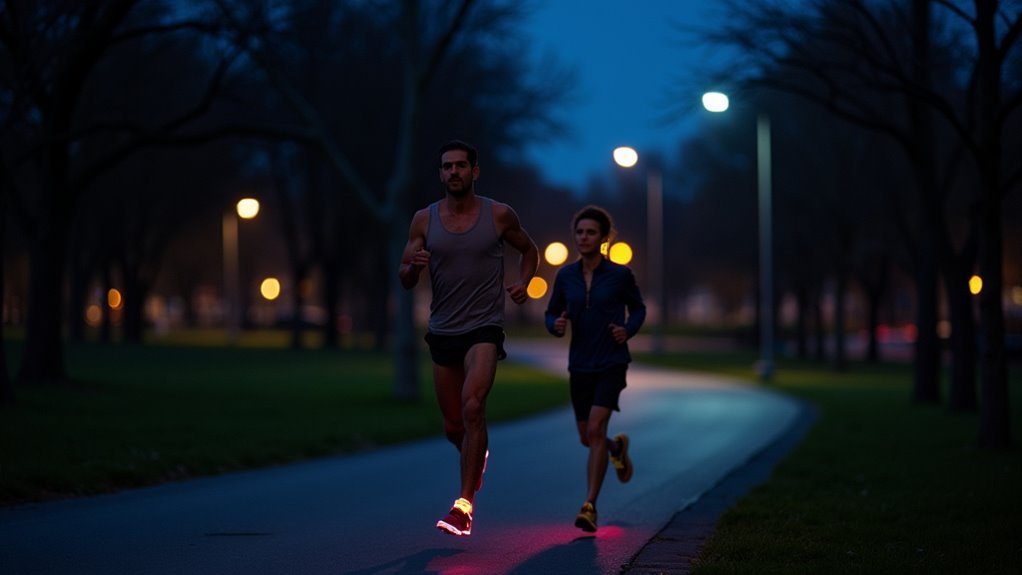
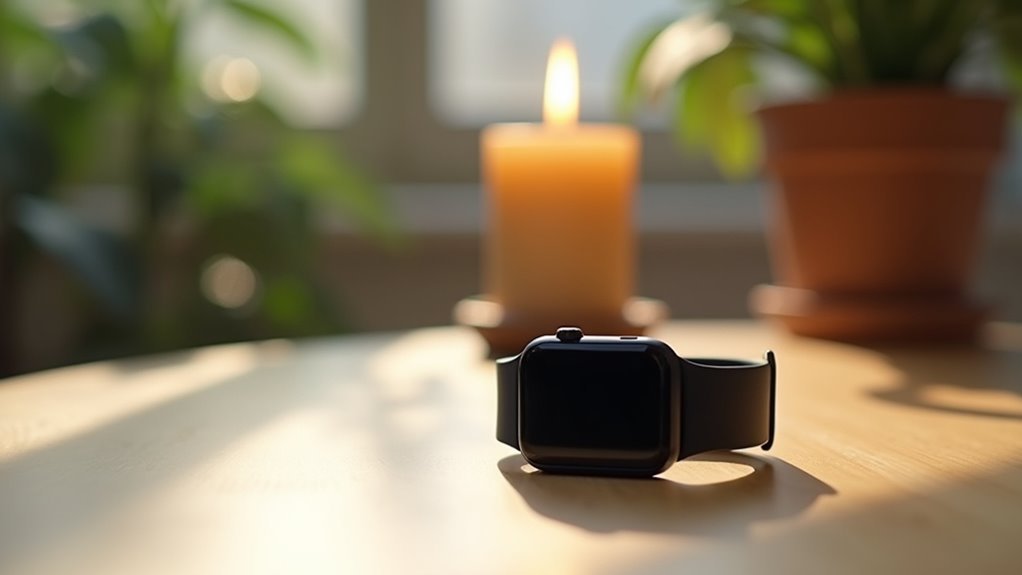
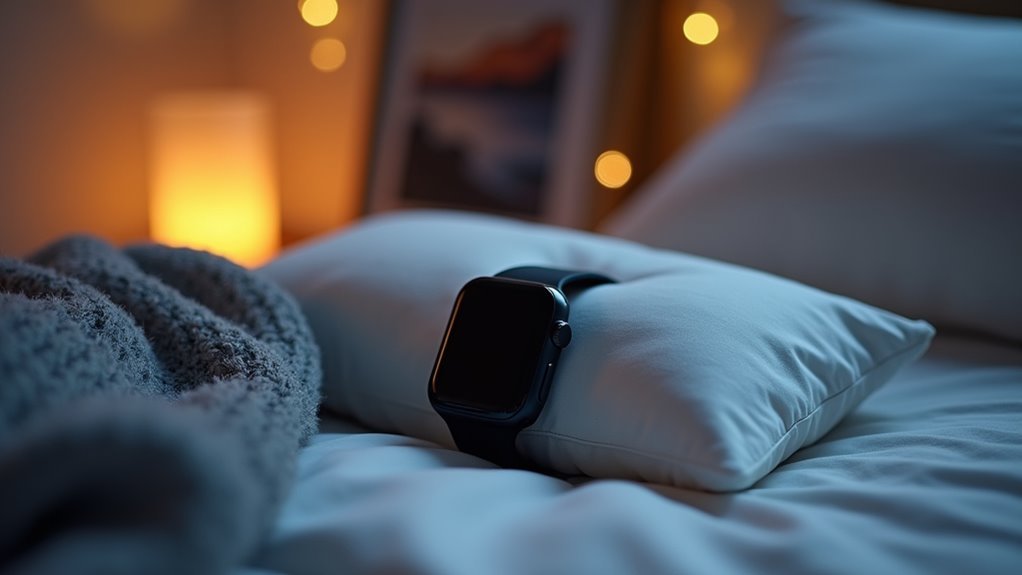
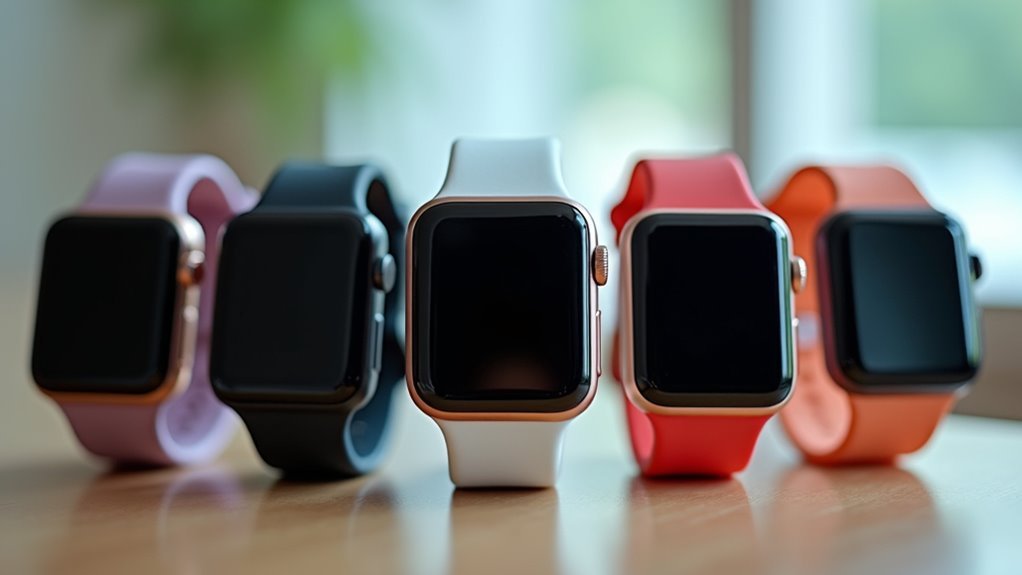
Leave a Reply